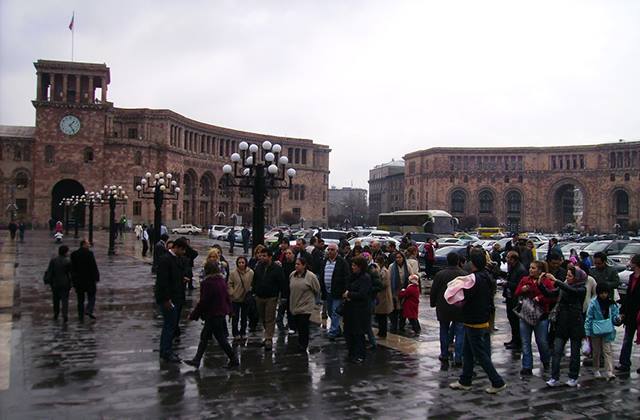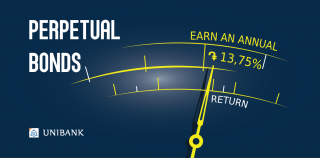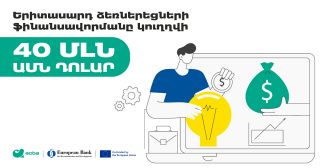
Why is Armenian Dram Being Appreciated?

Armenian dram has entered a phase of appreciation. Throughout last month exchange rate for the USD has fallen by more than AMD 15.
According to the Central Bank of Armenia (CBA), exchange rate for USD comprised AMD 479.93. Trade banks were buying it on average by AMD 479, and selling by AMD 481-482.
Why is Armenian dram being appreciated? On account of previous years’ experience, non-economists also give its clear answer—due to the flow of Iranian tourists.
Each March 20-21 our neighbors celebrate Nowruz Bayram (New Year of the Islamic world) and many of them prefer to spend their holiday in Armenia. Upon various calculations, 25-30 thousand tourists visit Armenia during Nowruz, each of which on average spends USD 500-800 here. Entrance of cash exchange rate of that volume into Armenian market for one week is equal to serious intervention by the CBA and impacts on the exchange rate—Armenian dram is being appreciated.
Samvel Chzmachyan, head of the banks management board, doesn’t exclude either that certain fall of the exchange rate is due to Iranian tourists’ visit to Armenia. In an interview with reporters on March 25 he said, “Our market is so small, that celebration of Nowruz in Armenia may bring to likewise changes. I’m convinced that it’ll surely have its implication. On the other hand, monetary policy by the CBA in 2015 lead to minor drop of Armenian dram throughout the whole year and this year as well, what is more, fall of dollar has been recorded.” Statistics of previous years is also a proof of it (see the Chart).

However, conditioning current appreciation of Armenian dram only by Iranian tourists isn’t so correct either. The point is, Armenian dram was appreciated earlier, and that process was developed by a few stages.
Conditional first stage launched on February 20 and lasted for a week. On that day exchange rate for US dollar, pursuant the CBA, comprised AMD 495.93, and on February 25 it dropped to AMD 491.7.
Throughout the first 10 days of March it was stabilized within AMD 491. Starting from March 11 Armenian dram was again appreciated, and dropped to AMD 486 till the 18th. This may be regarded as the second stage.
After 1-2 days stabilization, from March 20 Armenian dram entered the second, more rapid stage of appreciation. Exchange rate for dollar within 6 days dropped by more than AMD 6, from AMD 486 to AMD 479.9.
This very last stage may be conditioned by the factor of Iranian tourists, as opposed to the previous two (during which Armenian dram was appreciated by AMD 10). And what may contribute to appreciation of Armenian dram?
It can’t be definitely said that, however, at least regarding the second stage, there is a circumstance, which shouldn’t be ignored though.
On March 3 Hovhannes Hovsepyan was appointed head of State Revenue Committee, separated from the Ministry of Finance. A short period later, information was being circulated in the press, that companies implementing cargo transportation from Turkey, China and United Arab Emirates faced some problems. They failed to implement customs clearance upon formerly adopted rules, due to which the goods didn’t enter Armenia from those countries. Recently even news is being circulated that importers have to store some part of goods in the territory of Iran, and that already a deficit for goods imported from those countries is apparent now. What this change of rules is conditioned by, what purpose its follows and how long it’ll last—it’s another issue.
For the time being the fact is that companies importing goods from these countries (mainly SMEs) have temporarily suspended it. Accordingly, they don’t need exchange rate. And import volumes from these countries are small though. For instance, pursuant data by the National Statistical Service, import volumes from China to Armenia in 2015 comprised about USD 416 million, UAE—USD 68 million, and Turkey—USD 232 million (regardless closed borders).
Upon rough calculations, goods costing about USD 2 million are daily being imported to Armenia. And this means, suspension lasting for days, and, moreover, for weeks, may seriously impact on exchange rate demand and appreciate Armenian dram.
By Babken Tunyan























